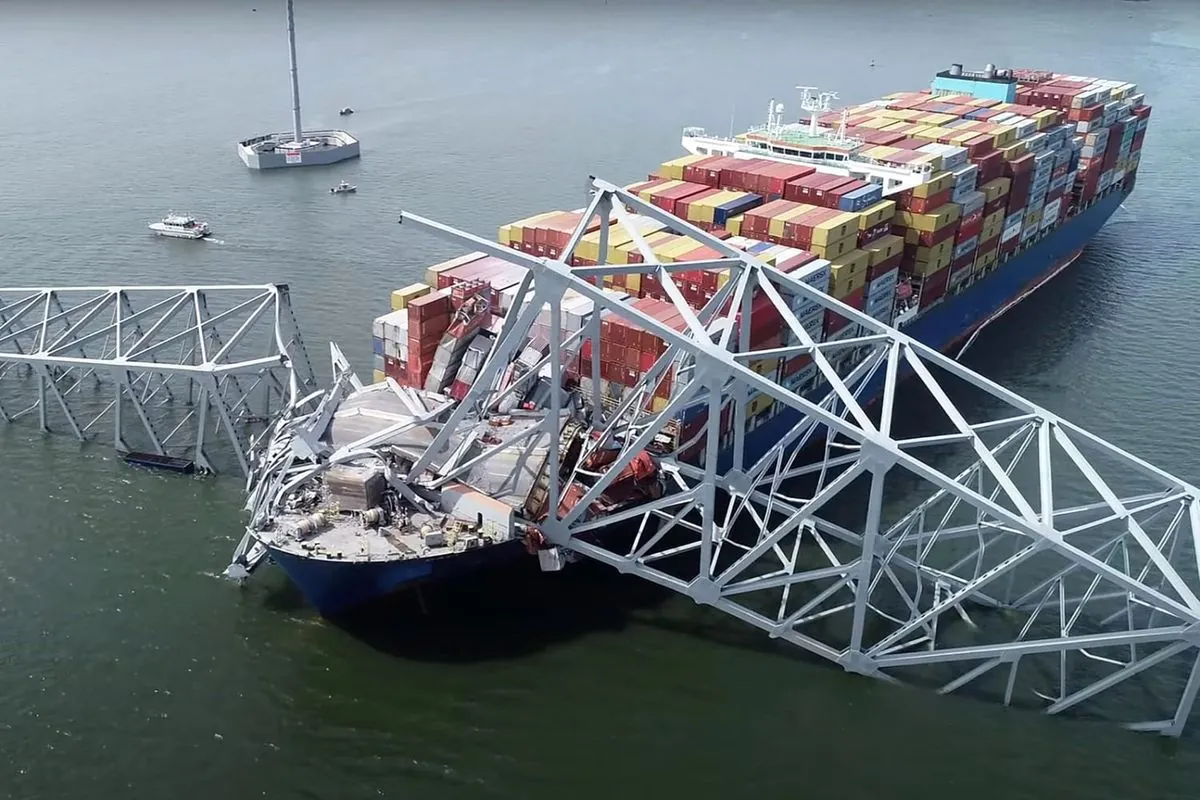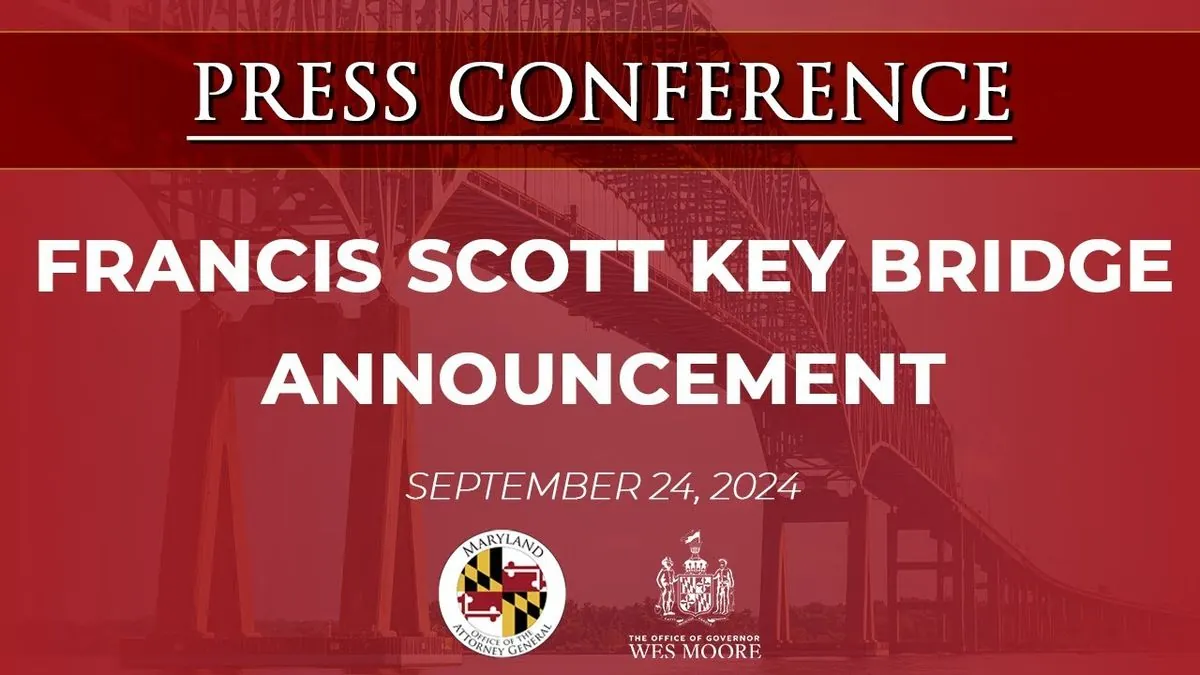Baltimore Bridge Collapse Sparks Massive Legal Battle
Multiple parties file claims against ship owner and operator following Francis Scott Key Bridge disaster. Maryland's legal team could earn over $100 million in fees if successful.

In the wake of the catastrophic collapse of Baltimore's Francis Scott Key Bridge in March 2024, a significant legal battle has commenced. The state of Maryland, the U.S. Justice Department, victims' families, and other parties have initiated civil claims against Grace Ocean Pte Ltd and Synergy Marine Group, the owner and operator of the cargo ship responsible for the incident.
The litigation surrounding this disaster has far-reaching implications, with billions of dollars at stake for taxpayers and the involved companies. The collapse of the bridge, named after the author of the US national anthem, has disrupted one of the busiest shipping channels in the country, impacting the Port of Baltimore, which is one of the largest ports on the US East Coast.
Maryland has assembled a formidable legal team for its case, including the Lanier Law Firm, Kelley Drye & Warren, and other prominent firms. The state's fee agreement with these firms is structured on a contingency basis, with the potential for substantial payouts. For instance, a $1 billion recovery could result in $143 million in legal fees, while a $2 billion recovery might yield $163 million for the lawyers.

The economic impact of the bridge collapse is staggering. Maryland estimates the repair cost at $1.7 billion, with additional losses in tax and toll revenue. The Port of Baltimore, which generated over $70 billion in economic value in 2023, has been severely affected. The port's significance extends beyond local economics, as it handles more roll-on/roll-off cargo than any other US port and is a major hub for imported vehicles.
Other parties have also joined the legal fray. The city of Baltimore, represented by DiCello Levitt and Saltz Mongeluzzi Bendesky, has filed its own lawsuit. Baltimore County has engaged Grant & Eisenhofer and Bekman Marder Hopper Malarkey & Perlin for its claims. The U.S. Justice Department is seeking $103 million to recover costs associated with clearing the wreckage and reopening the waterway in June 2024.
However, claimants face a significant hurdle due to maritime law. Grace Ocean and Synergy Marine have petitioned the court to limit their liability to approximately $43 million, citing federal maritime law. This legal maneuver highlights the complex nature of maritime litigation, which often involves intricate international agreements and can take years to resolve.
The collapse of the Francis Scott Key Bridge, which was the third-longest continuous truss bridge in the world when it opened in 1977, has had far-reaching consequences. It has disrupted supply chains, affected local employment, and necessitated the rerouting of traffic, increasing wear and tear on alternative routes.
As the legal proceedings unfold, the case serves as a reminder of the profound impact that maritime disasters can have on local and national economies. The outcome of this litigation could set important precedents for future cases involving large-scale infrastructure failures and maritime accidents.
"These firms are providing assistance to the OAG litigation team, and we will devote as many lawyers as necessary to effectively pursue the state's claims in this litigation that is of such critical importance to Marylanders."
In related legal fee news, a New York lawyer faced penalties for pursuing a case against Dutch airline KLM despite knowing his client's claims were false. Additionally, in a separate matter, Oracle was awarded over $58.5 million in legal fees in its copyright dispute with Rimini Street.
As the Baltimore bridge collapse litigation progresses, it will undoubtedly be closely watched by legal experts, policymakers, and the public alike, given its potential to shape future approaches to maritime law and disaster response.


































